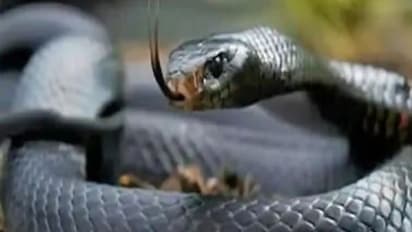Study reveals brazilian viper venom might help in fighting against Coronavirus

Synopsis
Rafael Guido, a professor at the University of Sao Paulo and one of the study's authors, said that they were able to show that this component of snake venom could block an essential protein from the virus.
Brazilian researchers discovered that a chemical in the venom of a snake reduced coronavirus replication in monkey cells, which might be the first step toward developing a medication to treat the virus that causes COVID-19. The chemical produced by the jararacussu pit viper, according to research published this month in the scientific journal Molecules, decreased the virus's ability to reproduce in monkey cells by 75 per cent.
Rafael Guido, a professor at the University of Sao Paulo and one of the study's authors, said that they were able to show that this component of snake venom could block an essential protein from the virus. The molecule is a peptide or chain of amino acids that may link to PLPro, a coronavirus enzyme essential for virus replication without harming neighbouring cells.
Also Read | COVID recovered patients to suffer from fatigue, shortness of breath for a year: Study
The peptide, which is already recognised for its antimicrobial properties, may be produced in the laboratory, according to Guido, eliminating the need for the snakes to be captured or raised.
According to a statement from the State University of Sao Paulo (Unesp), which was also engaged in the research, researchers will next analyse the efficacy of different dosages of the molecule and if it is possible to prevent the virus from entering cells in the first place. They want to test the chemical in human cells, but no timetable was provided.
Also Read | Delta variant infects both vaccinated, unvaccinated; reduces mortality among inoculated: ICMR study
The jararacussu is one of Brazil's biggest snakes, reaching lengths of up to 6 feet (2 metres). It is found in the coastal Atlantic Forest, as well as Bolivia, Paraguay, and Argentina.
Check the Breaking News Today and Latest News from across India and around the world. Stay updated with the latest World News and global developments from politics to economy and current affairs. Get in-depth coverage of China News, Europe News, Pakistan News, and South Asia News, along with top headlines from the UK and US. Follow expert analysis, international trends, and breaking updates from around the globe. Download the Asianet News Official App from the Android Play Store and iPhone App Store for accurate and timely news updates anytime, anywhere.